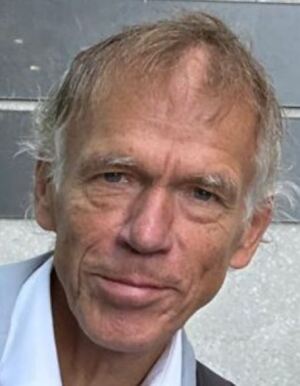- Light
Meldung vom:
Zur Original-Meldung
Das Physikalische Kolloquium findet, wenn nicht anders angegeben, jeweils um 16:15 Uhr im Hörsaal 1 Abbeanum, Fröbelstieg 1 statt. Die Kolloquien im Hörsaal 1 Abbeanum können auch im live stream verfolgt werden:https://online.mmz.uni-jena.de/beta/livestream/?hsid=2251_hsabb1Externer Link
-
28. April 2025
Prof. Axel Brandenburg
Foto: privatGastgeber Prof. Sebastiano Bernuzzi
Primordial magnetic fields and relic gravitational waves messengers of the first microseconds
Prof. Axel Brandenburg
(Nordita, KTH Royal Institute of Technology and Stockholm University)Our detailed understanding of cosmology rests on only a few firmly established observational probes. One of them derives from the expansion history of the universe and the clustering of galaxies observed in the large-scale structure of galaxies observed today. The other is the measurement of temperature anisotropies and polarization in the cosmic microwave background that formed when the universe was 400,000 years old. Finally, there is the measurement of the abundances of light elements in the universe that constrain the physics within the first three minutes. However, we lack measurements of the first microseconds when weak and electromagnetic forces decoupled and particles attained their masses and quarks got confined inside nucleons. During these times, physics beyond the standard model must have determined the matter-antimatter asymmetry, produced dark matter, and led to the emergence of neutrinos. We can probe these very first moments through measurements of primordial magnetic fields and relic gravitational waves. The evolution of magnetic fields can be traced in an evolutionary diagram of magnetic field versus length scale and it follows a characteristic path. Relating the start- and endpoints to each other is an important theoretical accomplishment. At the same time, observational constraints in radio and gamma ray frequencies begin to narrow down the allowed parameter space in the evolutionary diagram. In this colloquium, I will discuss several of the theoretical and observational discoveries that make primordial magnetic fields and gravitational waves powerful probes of the first microseconds of the universe.
-
5. Mai 2025
Gastgeber Prof. Dr. Martin Gärttner
Title tba
Prof. Dr. Markus Oberthaler
(Universität Heidelberg) -
19. Mai 2025
Gastgeber Prof. Giancarlo Soavi
Topological plasmonics: Ultrafast dynamics of skyrmions, merons, and quasicrystalline excitations
Prof. Dr. Harald Giessen
(Universität Stuttgart) -
7. Juli 2025
Gastgeber Dr. Federico Capone, Prof. Dr. Martin Ammon
From black holes to quantum computing and AI
Prof. Marika Taylor
(University of Birmingham)The study of black holes has been at the centre of research into theoretical physics for over five decades, following the seminal discovery by Hawking of Hawking radiation. Black holes provide a natural laboratory for testing physics under extreme conditions, and for developing deeper understanding of the laws of Nature. Remarkable new connections have been found in recent years between black holes and future computing. A quantum computer makes use of the quantum states of subatomic particles to store and process information. Quantum computing has the potential to solve certain types of problems much more quickly than standard computers can do. We now believe that black holes are the most efficient quantum computers that can exist in Nature, and thus study of black holes can lead to new insights into quantum computers and efficient AI algorithms. In this talk we will explain what black holes might teach us about future computing and conversely what this implies for the fundamental properties of black holes.
